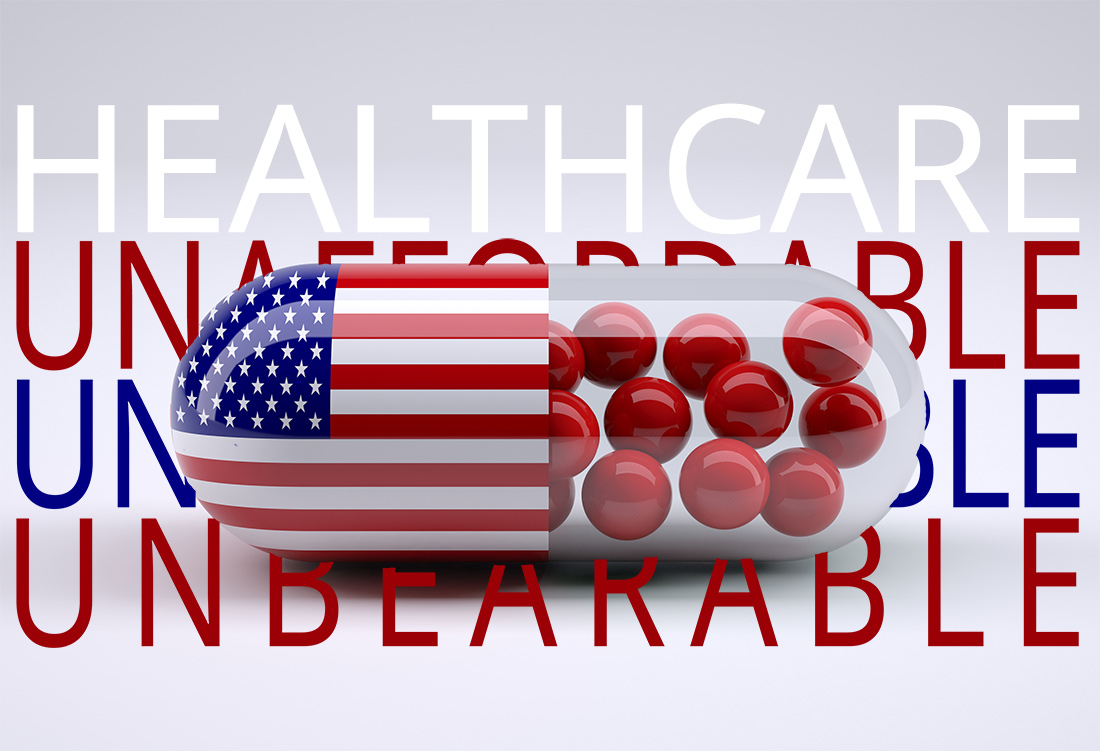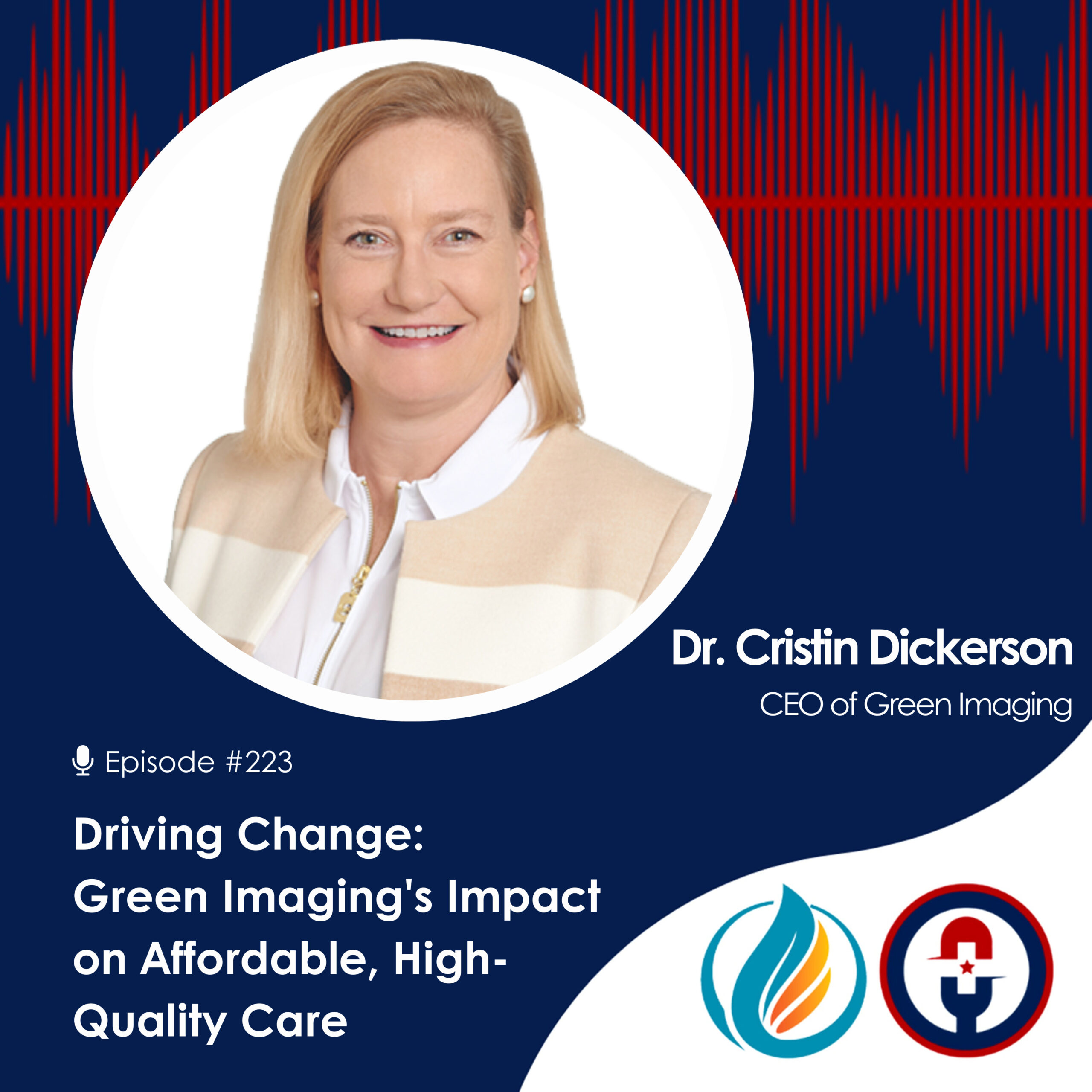Healthcare: Unaffordable, Unsustainable, Unbearable

We’ve reached the end of the runway. There’s just no more tarmac left.
No More Tarmac Left For the Middle Class
Republican or Democrat, Conservative or Liberal, Right or Left, it makes no difference. No one on either side of the political spectrum has been able to come up with a fix for America’s failing healthcare system. That’s not to say that the United States isn’t capable of offering world-class medical services, pharmaceuticals, and products. On the contrary, the U.S. can boast many of the world’s elite hospitals, advanced medical research institutions, and innovative pharmaceutical patents. Those with the means often come to America for the most up-to-date and cutting-edge treatments. But that’s the catch: our healthcare system only works for those with the means.
According to a Harvard study published in the June issue of Health Affairs, the U.S. was in the bottom three of all nations examined in regards to the health of a select elite and the rest of the country. One of the primary drivers of this health inequality according to the study is the much higher out-of-pocket costs per person for medical care. The fact is, we Americans, wealthy, middle class, and poor simply pay much more for healthcare than our friends in the rest of the world.
"When the time has come that even the vaunted American middle class cannot afford quality healthcare and must choose between getting the care they need and paying their bills, then can an American middle class even be said to exist today?"
--- DR. CRISTIN DICKERSON, MD
Half of Americans make less than $20 an hour. They spend on average 15% of gross income on health care premiums for plans with an average deductible greater than $1000. Most have less than $400 in savings left to cover out of pocket health care costs without taking on debt. We have reached a point that even those in the middle class can no longer afford the health care plans for which they pay so dearly. When the time has come that even the vaunted American middle class cannot afford quality healthcare and must choose between getting the care they need and paying their bills, then can an American middle class even be said to exist today?
Spending More on Healthcare is Not the Answer
The problems with the U.S. healthcare system are systemic, widespread, and can’t just be patched up with a single legal provision or spending bill. The system is rotten to its very foundation.
For proof that more money is not the answer, simply follow the money trail. In fact, if direct spending, whether by private entities or the Federal government, were indeed a good measure for healthcare quality, access, and affordability, then the United States ought to have one of the best, most affordable healthcare systems in the world. We spend far more on healthcare than any other developed nation. In fact, we spent nearly three-fold more per capita on healthcare than the OSCE average.
American workers and companies spend far more than their counterparts on healthcare and yet receive in return healthcare that is good, but not great. The quality of healthcare for the vast majority of Americans is considered “average” when compared to some competing countries around the world. The next question then, is to ask: “Where has all the money gone in healthcare?”
Where Has All The Money Gone In Healthcare?
The answer to where all our spending goes can be summed up with three broad answers:
- corporate profits
- administrative fees
- and a rapidly graying population
Corporate Profits
Corporate profits, for big insurance companies, hospital conglomerates, medical device manufacturers, big pharma, and other beneficiaries of high healthcare prices have hit record highs. When there is a profit motive, and when corporations that are legally obligated to shareholders set the prices of essential goods and services, their incentives are misaligned with providing affordable care. This is not to say that corporations are wrong, it is simply asking the question whether it is really a good idea to allow profits to be the primary driver of healthcare prices.
Administrative Fees
Healthcare administrative fees, including legal fees and bureaucratic costs, are the highest in the world. This comes as no surprise considering how complex and downright bizarre the healthcare system has become. There are 10 administrators per doctor in hospital systems. Administrative costs probably account for more than 30 percent of healthcare costs according to big pharmaceutical company Merck.
Baby Boomers
Finally, with baby boomers hitting their golden years, the healthcare system is being strained and stretched further than it was ever intended to withstand. The proportion of the U.S. population over 65 is predicted to increase from 13 percent to nearly 20 percent by 2030. Remember, Medicare collects about $140,000 in taxes from the typical retiring couple while paying out $422,000 in benefits.
With 77 million Boomers projected to retire soon, it doesn’t take a math major to realize that the situation is untenable. Where will the money come from to pay for their care? Someone will have to pay the bill, whether it be through debt, taxes, or slashing of services. Someone will pay the bill, and unfortunately, current trends seem to indicate that it will be the average working American who will pay and are currently paying the price with their bank accounts, with their health, and unfortunately, with their lives.
"Employers second largest line item is healthcare and many small employers are under the perception they simply cannot afford to provide healthcare coverage at all. That's ridiculous!"
--- DR. CRISTIN DICKERSON, MD
3 Signs that the American Healthcare System Is On the Verge of Collapse
1. As Many as Half of All Americans Forego Care Due to Costs
According to some sources, nearly 50 percent of our fellow Americans choose to ignore pressing medical problems or delay treatment because they just cannot afford it. This single statistic is perhaps the most damning snapshot of a system that isn’t just broken, it is dangerously decrepit and on the verge of collapse.
Independent social research organization NORC based at the University of Chicago discovered that nearly one-third of Americans reported having to choose between paying for medical bills or fulfilling basic needs such as food, shelter, and utilities. While foregoing unnecessary procedures, such as cosmetic surgery, would show that the system is, in fact, encouraging Americans to make discerning healthcare choices, the evidence suggests that Americans are foregoing not just elective procedures, but all procedures including cost-effective and life-saving preventative treatments due to cost concerns. One in three survey participants in a recent study, for example, reported leaving critical prescription unfilled or taking less than the recommended dosage of a prescribed drug to save money.
2. The US Spends Far And Away More Money than Anyone Else on Healthcare, Yet Has Worse Healthcare Outcomes
We spend $9,237 per person per year on healthcare or about 2.7 trillion dollars for middling healthcare results that aren’t any better than the results of other developed nations. The United Kingdom (UK), for example, spends $3,749 per person. Their citizens enjoy better health outcomes and a higher life expectancy. Based on the enormous amount of money expended on healthcare and the average results, one could assume that the United States healthcare system is perhaps the most inefficient healthcare model in the world.
3. There Is No Real Price Transparency or Price Competition
The healthcare industry is one of the most consolidated markets in the country. Many if not most healthcare services, goods, and products, such as pharmaceuticals, out-patient care, and medical devices are dominated by one or two big players who can set prices for their goods and services as they wish.
The presence of negotiated rates and other forms of price setting has resulted in pseudo-monopolies more akin to feudal kingdoms than true, honest-to-God free markets. As a result, prices for everything from pacemakers to health insurance premiums just keep rising.
High medical prices are the underlying drivers of the healthcare affordability crisis. A simple MRI procedure can cost anywhere from $300 to as much as $3000 with no apparent rhyme or reason. Interestingly, this is a phenomenon people have known about for decades, even before the Affordable Care Act was supposed to solve the nation’s healthcare woes.
Something has to change.
Even with insurance, many Americans still cannot afford their medical bills. It’s so bad that, according to NerdWallet, many Americans are turning to crowdfunding to help meet their healthcare needs. Half of all projects on crowdsourcing platforms have to do with or are related to healthcare. That’s ridiculous!
Employers second largest line item is healthcare and many small employers are under the perception they simply cannot afford to provide healthcare coverage at all. That's ridiculous!
There are warriors for change in the healthcare market and the tide is turning. We are partnering with innovative TPAs, physicians who have had enough of the broken system, and vendors with cutting edge technology to offer a truly affordable higher quality healthcare option here in Texas and then beyond. Stay tuned!
The Green Imaging Difference
Green Imaging provides a direct, uninhibited path from the supply (medical services, products, and drugs) to the demand (consumers and patients) thereby reducing costs. With Green Imaging you can save between 50 and 80% of your out-of-pocket costs for MRI, CT, ultrasounds, and other high-quality imaging services. See why we are the leader in diagnostic imaging.








